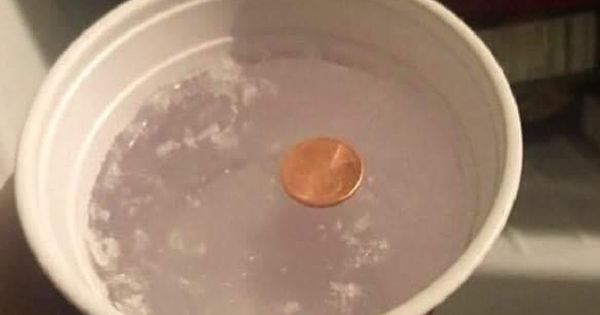A Simple Trick to Check If Your Frozen Food Is Safe After a Power Outage
Ever come back from a trip to find your digital clocks flashing the wrong time? That blinking display is a telltale sign of a power outage, leaving you questioning whether the food in your freezer is still safe to eat. Sheila Pulanco Russell shared a clever and easy tip on Facebook to help you quickly assess the condition of your frozen goods.
This method requires just three common household items: a mug, a coin, and some tap water. Here’s how it works: fill a mug with water, freeze it, and place a quarter on top of the ice. When you return home, check the coin’s position. If the quarter is at the bottom of the mug, it means the ice melted and refroze, indicating that your food likely thawed and may not be safe to eat. If the quarter is still on top or in the middle, your food is likely still safe.
This brilliant hack is a quick, reliable way to avoid food waste and ensure your freezer contents are safe after a power outage. By making this a part of your routine, you’ll always be prepared for unexpected power disruptions. Share this tip with friends and family to help them protect their frozen goods, save money, and enjoy peace of mind.
Frequently Asked Questions (FAQs)
Q: Why does the coin’s position indicate whether my food is safe?
A: The coin’s position shows how much the ice melted during a power outage. If the coin sinks to the bottom, the ice fully melted, meaning your freezer’s temperature rose enough for food to thaw, which could allow bacteria to grow. If the coin stays on top or only sinks partway, the ice didn’t fully melt, suggesting your food remained at a safe temperature.
Q: Can I use any coin or container?
A: Yes! Any coin (like a penny or dime) will work as long as it’s heavy enough to sink if the ice melts. You can also use any freezer-safe container, like a plastic cup or small bowl, instead of a mug.
Q: How long should I freeze the water before placing the coin?
A: Freeze the water until it’s completely solid, typically 4-6 hours, to ensure the coin rests on top of a stable ice surface.
Q: What should I do if the coin is at the bottom?
A: If the coin is at the bottom, your freezer’s contents likely thawed and refroze. Check food for signs of spoilage (e.g., odd smells, textures, or colors). When in doubt, follow the USDA’s guideline: “When in doubt, throw it out” to avoid foodborne illness.
Q: Can this trick be used for short power outages?
A: Yes, but short outages (under 4 hours with the freezer door closed) typically keep food safe, as freezers can maintain safe temperatures for a while. This trick is most useful for longer outages or when you’re unsure how long power was out.
Tips for Using This Hack Effectively
- Make It Routine: Set up the mug-and-coin trick before every trip or during storm season when power outages are more likely.
- Label the Mug: Mark the container as your “freezer check” to avoid accidentally using it for something else.
- Check Freezer Settings: Ensure your freezer is set to 0°F (-18°C) or below for optimal food safety.
- Combine with Other Checks: Use this trick alongside checking for ice crystals or unusual odors in food for a more accurate assessment.
- Educate Your Household: Let everyone in your home know about the mug so no one moves the coin or discards the setup.
- Prepare for Outages: Keep your freezer full (even with water jugs) to help maintain cold temperatures longer during power loss.
- Share the Knowledge: Pass this tip along to neighbors, especially in areas prone to power outages, to help others stay safe.
This simple yet effective method can save you from the guesswork and potential risks of spoiled food. Stay prepared and keep your freezer contents safe!

